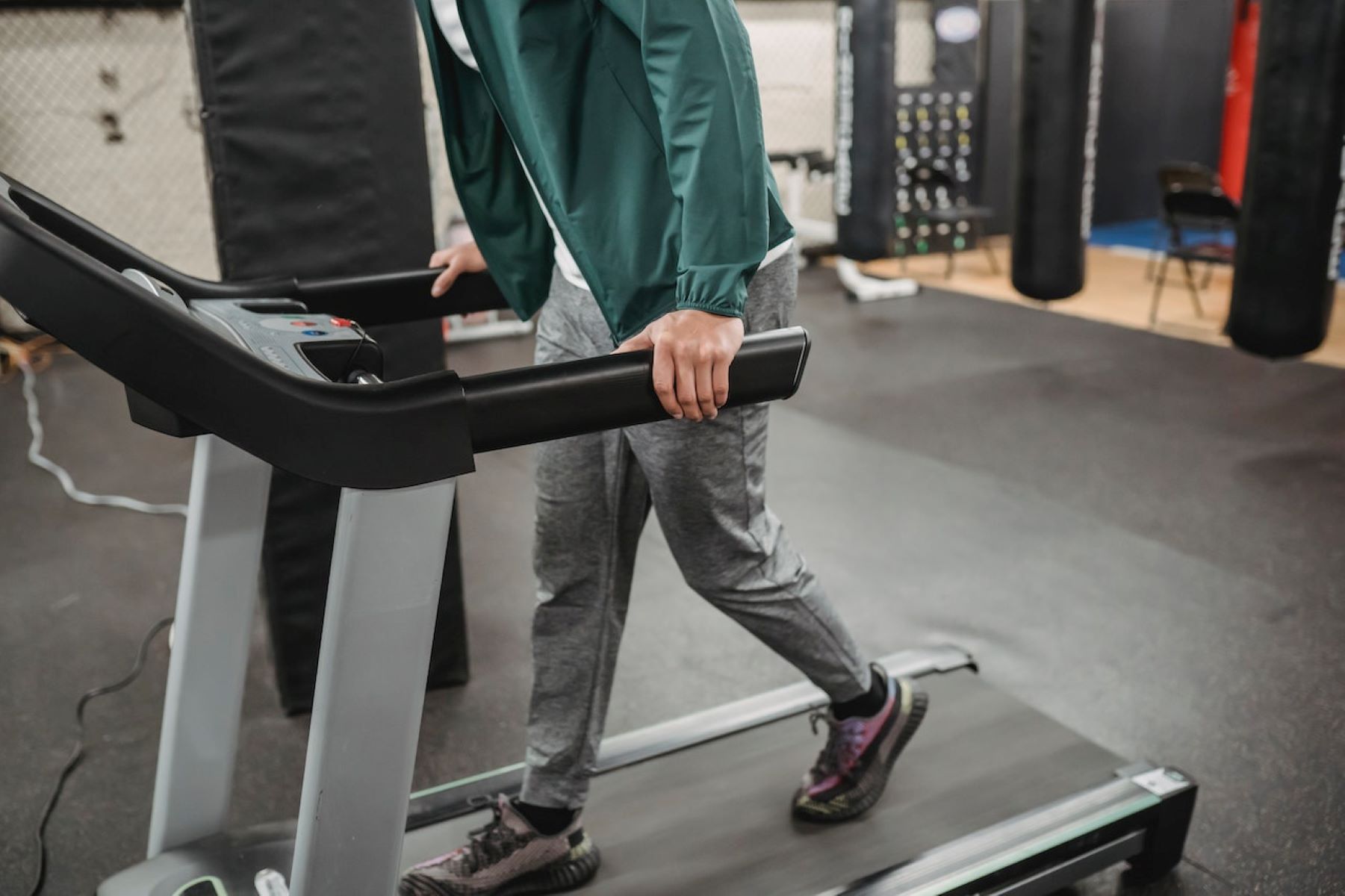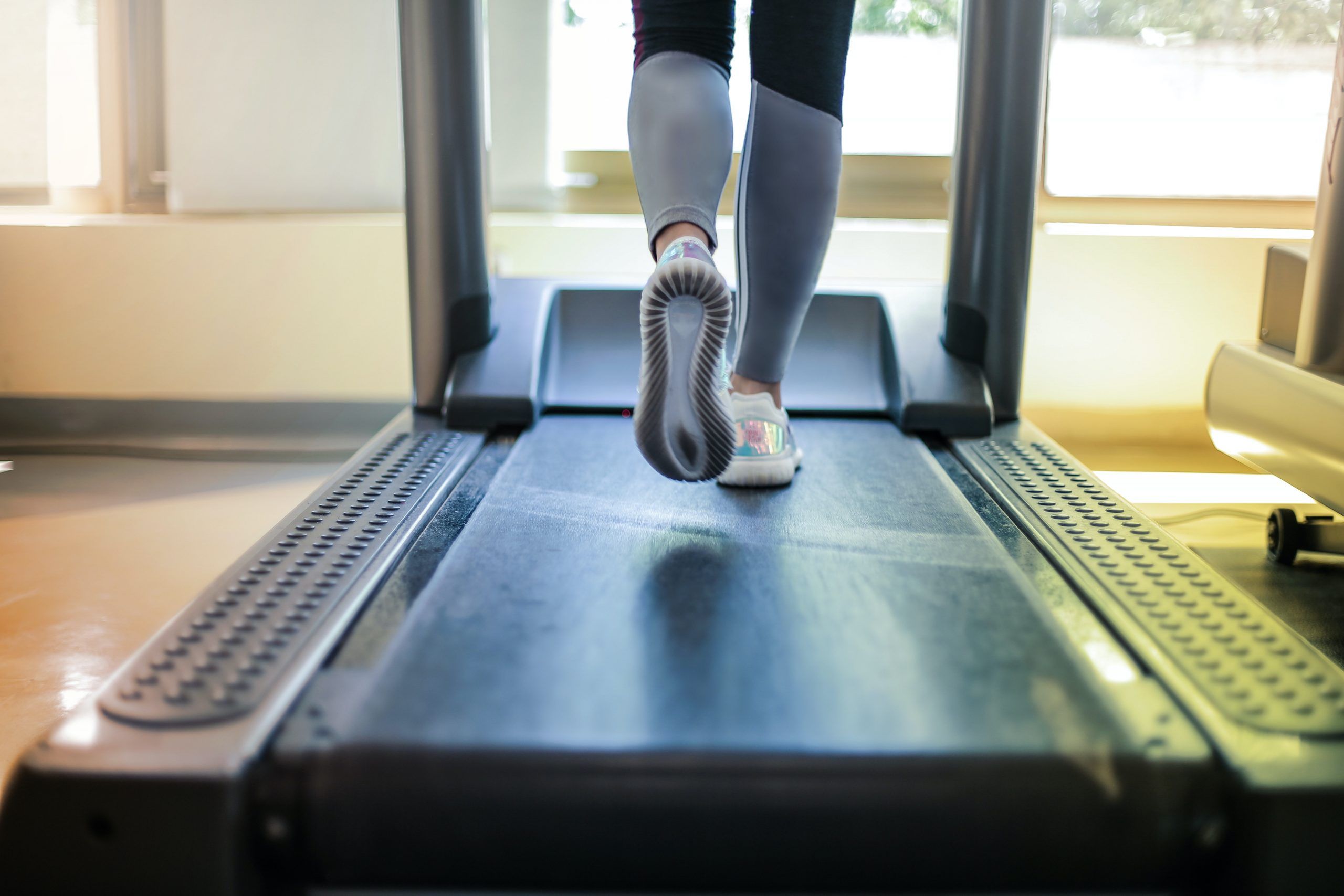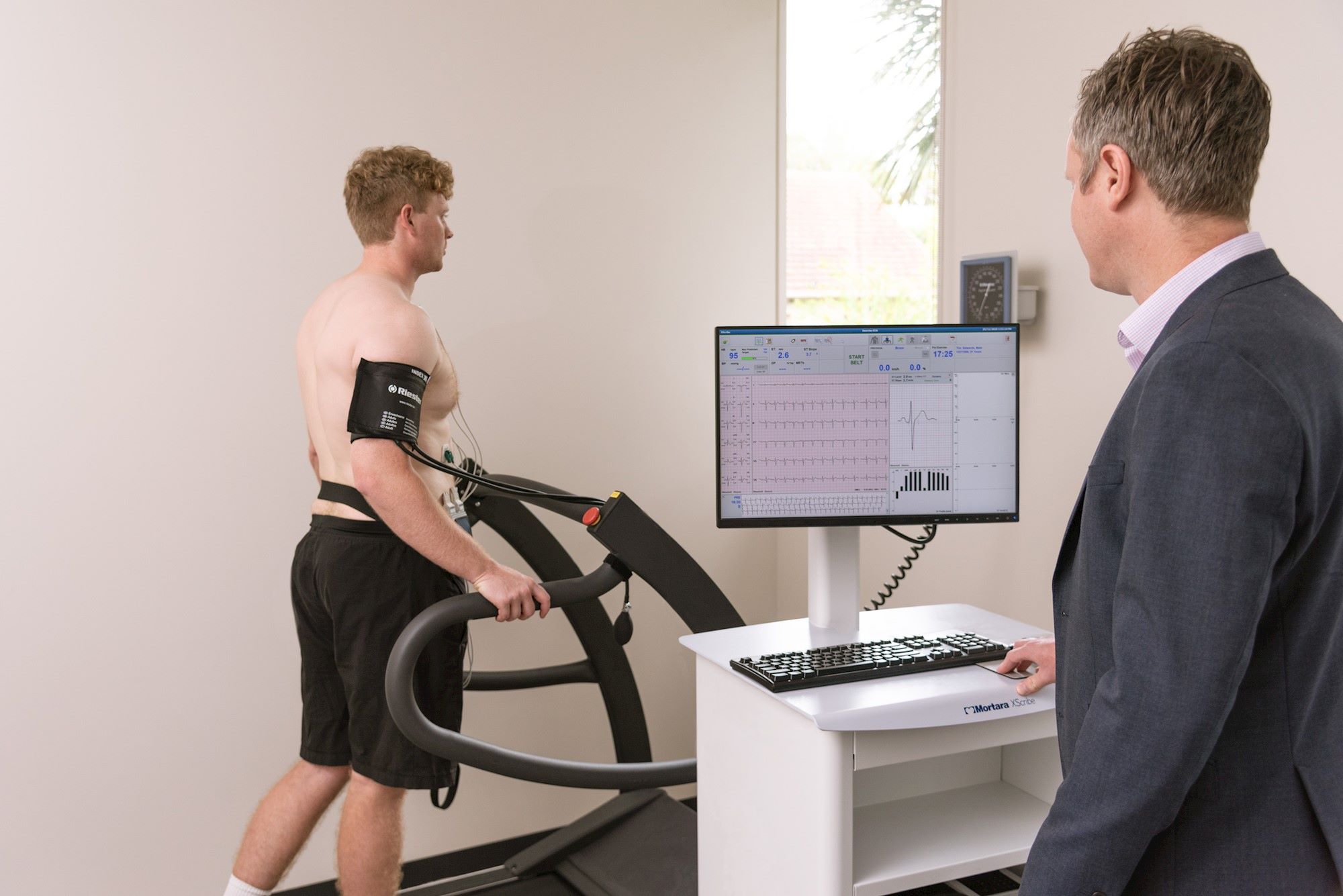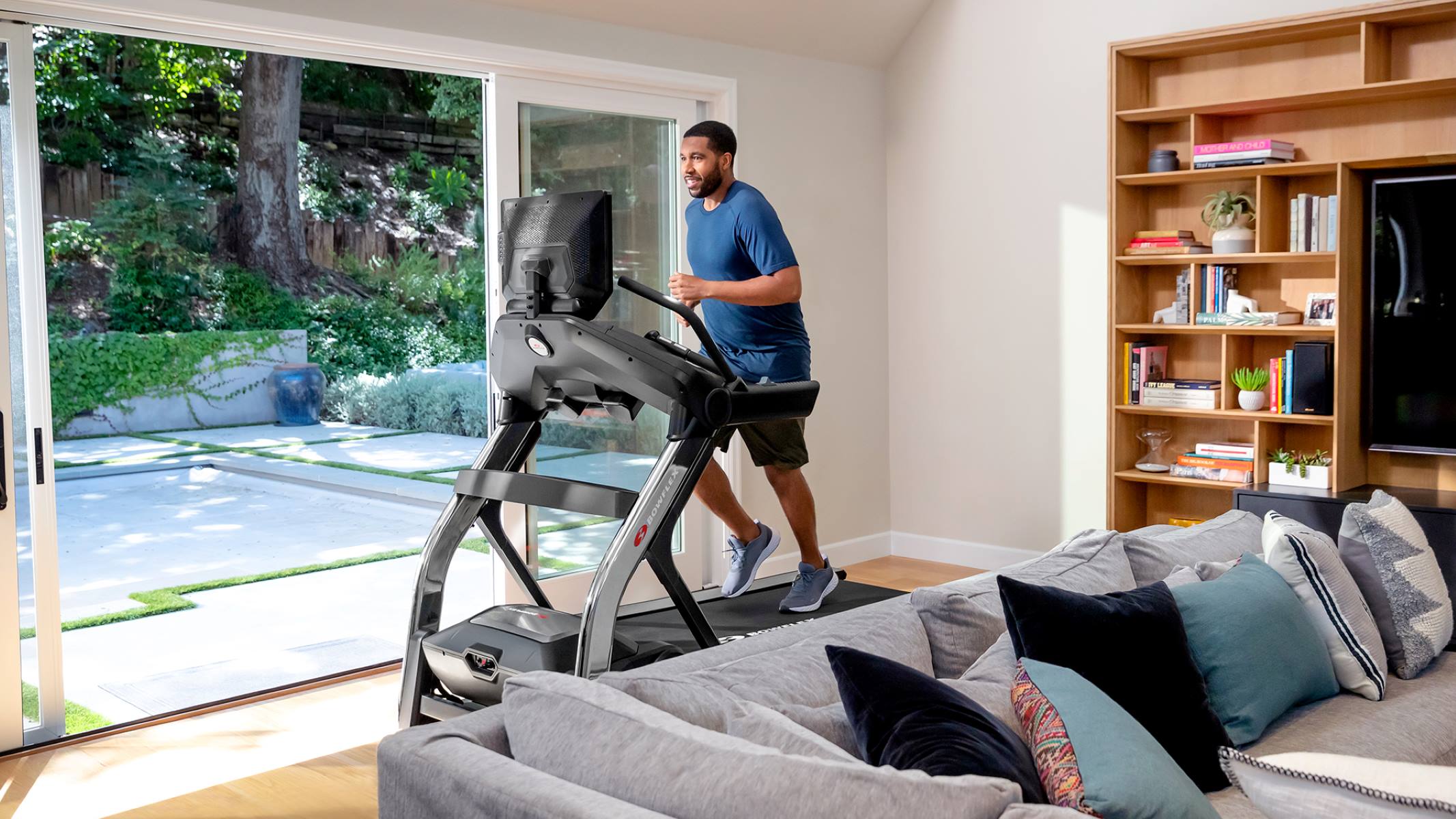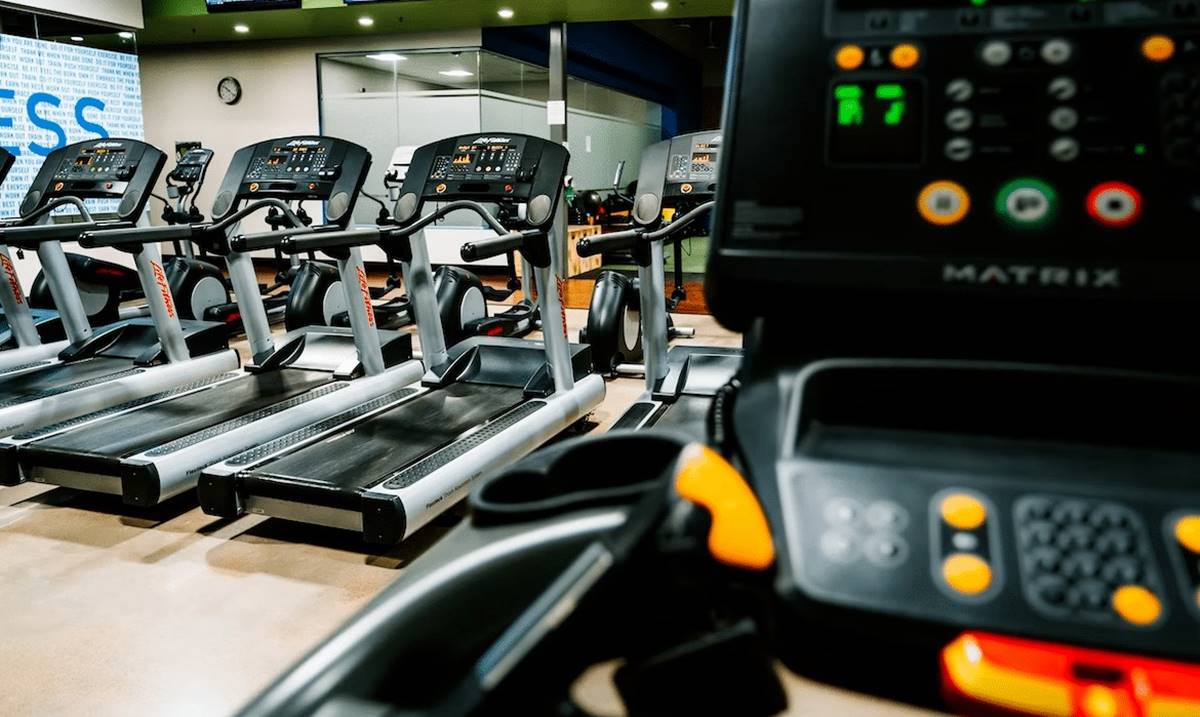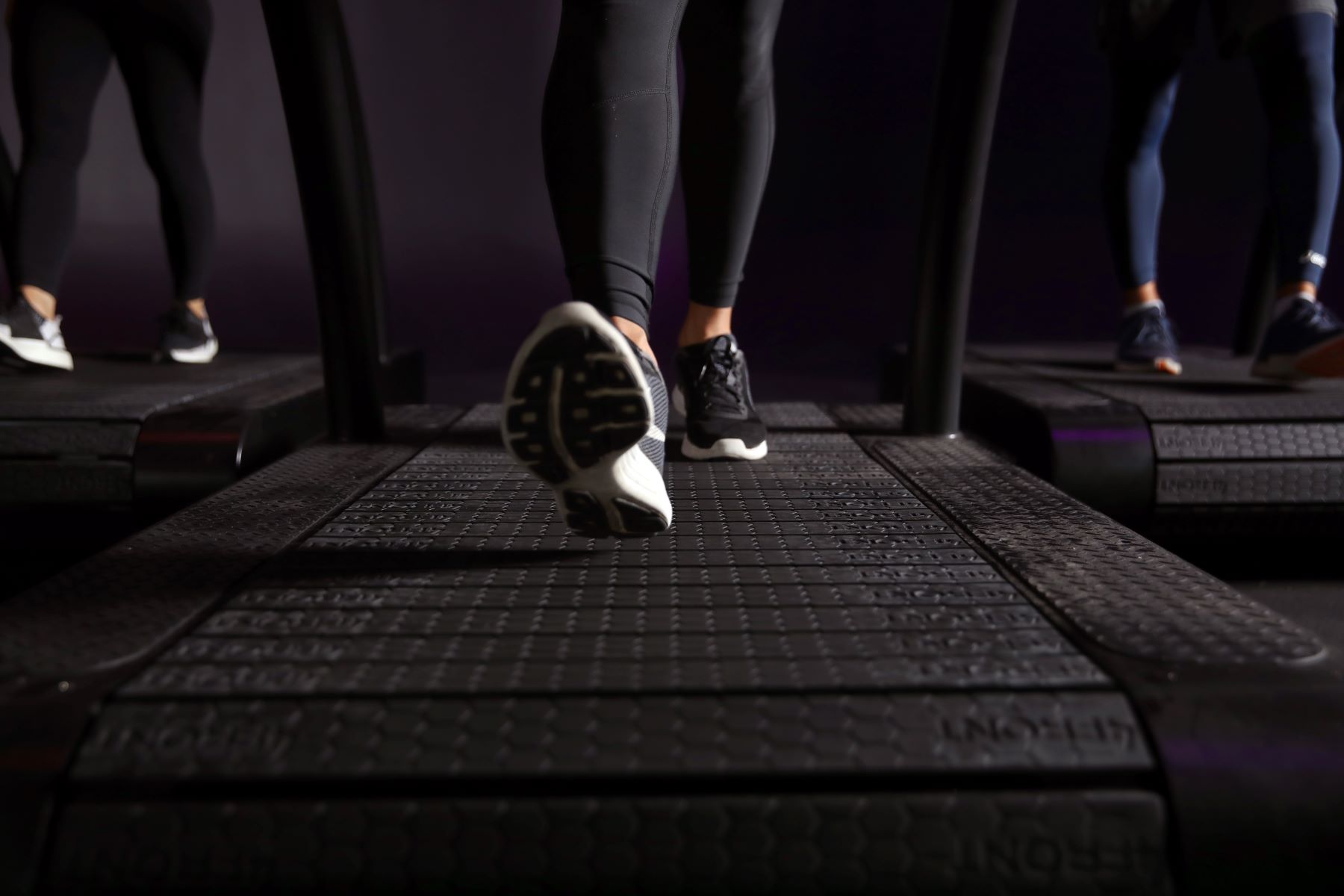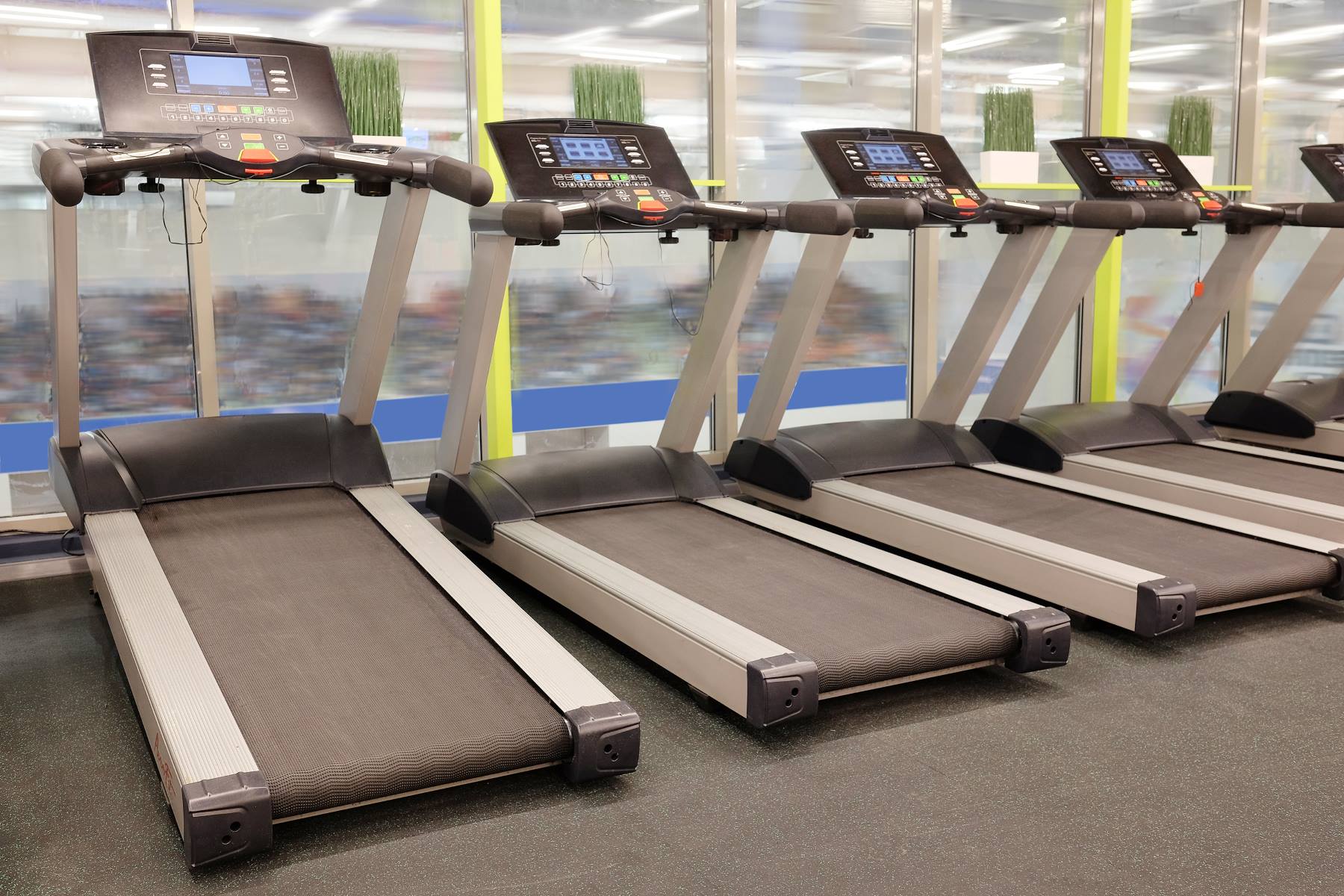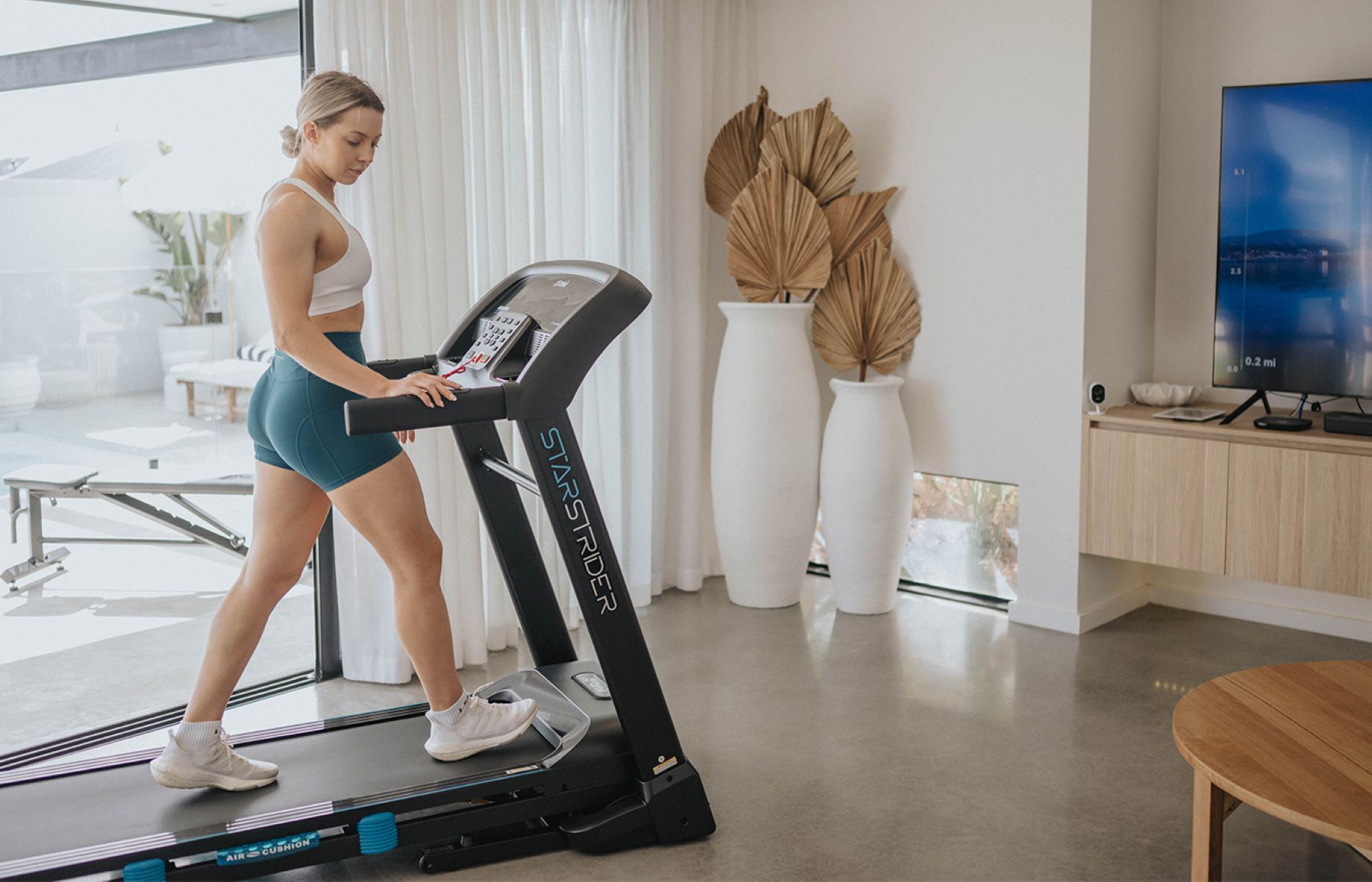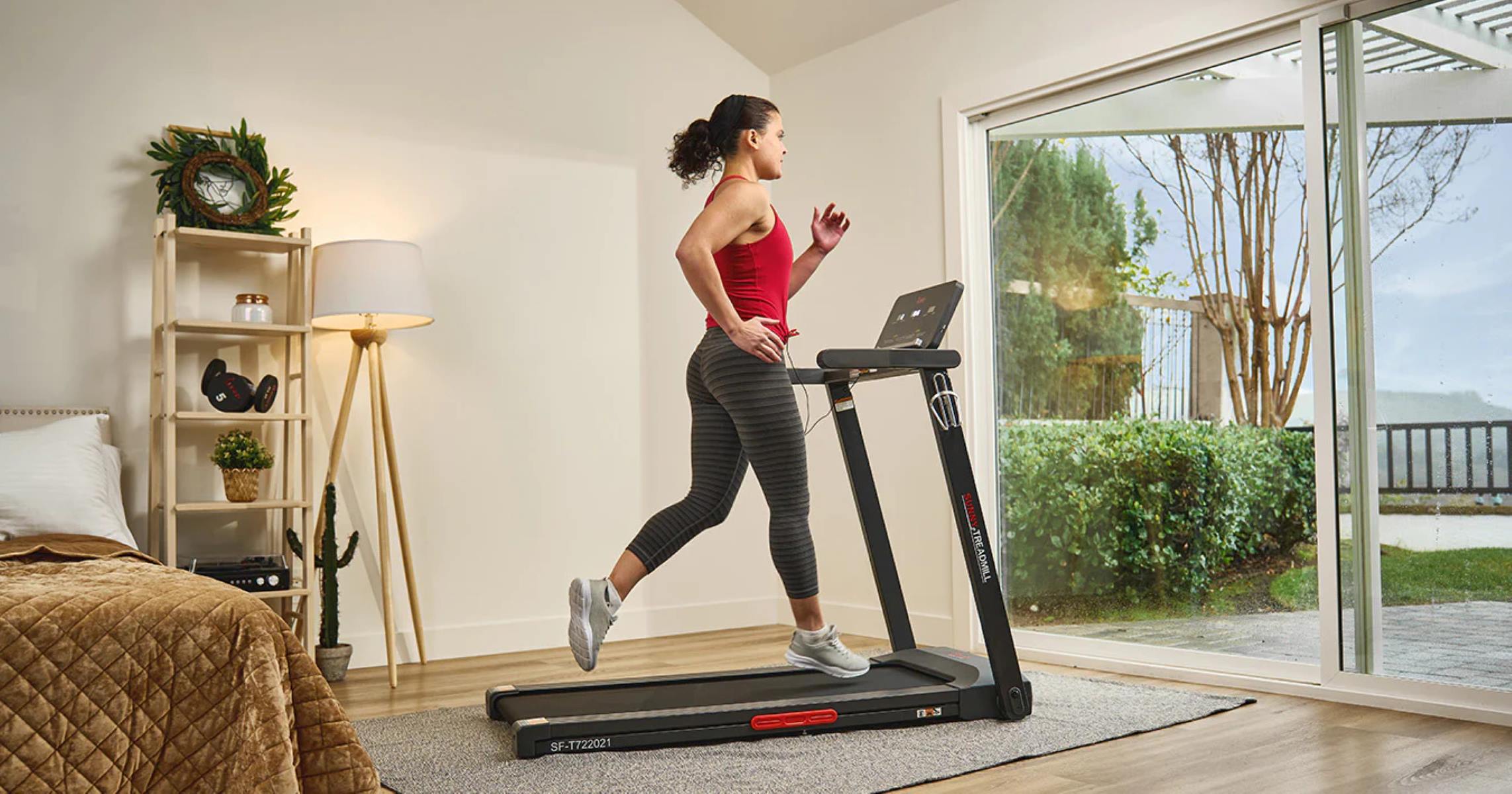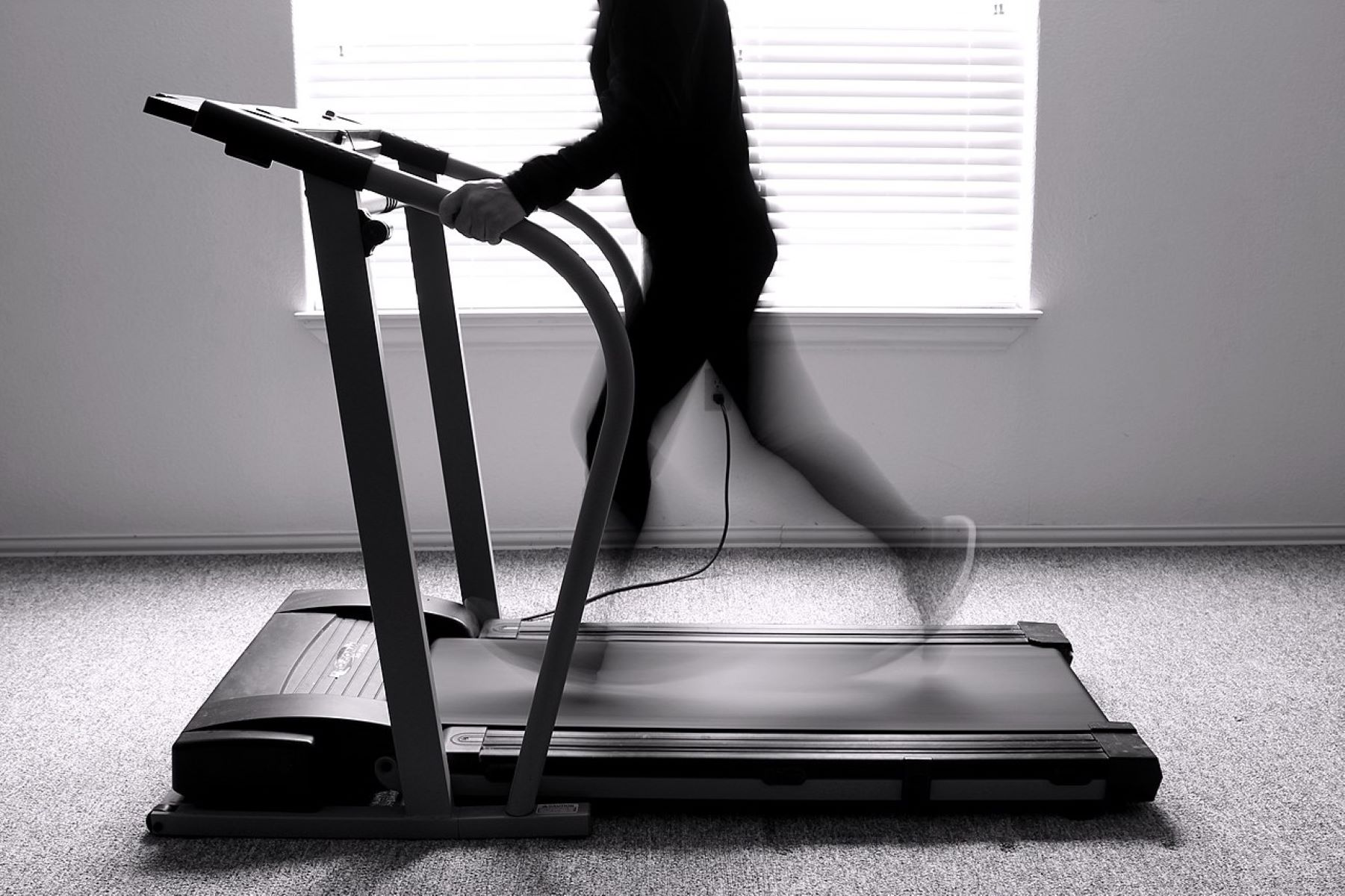

Featured
How Fast Should I Walk On Treadmill
Modified: August 21, 2023
Discover the optimal speed for walking on a treadmill with our featured guide. Find out how fast you should walk to maximize your workouts and achieve your fitness goals.
Introduction
Walking on a treadmill is a popular form of exercise that offers numerous health benefits. Whether you’re a beginner or a seasoned fitness enthusiast, finding the right walking speed on the treadmill is crucial for achieving your fitness goals. But how fast should you walk on a treadmill?
The answer to this question depends on various factors, including your fitness level, goals, and personal preferences. Determining the appropriate walking speed can have a significant impact on the effectiveness of your workout and help you avoid injuries. In this article, we will explore the importance of walking speed on a treadmill and provide recommendations for different fitness objectives.
Walking on a treadmill offers a low-impact cardiovascular workout that can help improve your cardiovascular health, burn calories, and even contribute to weight loss. The speed at which you walk influences the intensity of your workout and the benefits you can derive from it.
It’s worth noting that walking speed is relative, and what may be fast for one person might be slow for another. The key is to find a speed that challenges you but is still sustainable for the duration of your workout. It should feel brisk, but not so fast that you can’t maintain good form and control.
In the following sections, we will delve into the recommended walking speeds based on different fitness objectives. Whether you’re a beginner looking to start a workout routine, focusing on weight loss, aiming to improve your aerobic fitness, or wanting to engage in high-intensity interval training (HIIT), we have got you covered. We will also discuss how to measure walking speed on a treadmill and the safety precautions you should keep in mind while walking on a treadmill.
So, let’s lace up our sneakers, hop on the treadmill, and discover the perfect walking speed to help you achieve your fitness goals!
Importance of Walking Speed on Treadmill
The walking speed you choose on a treadmill plays a vital role in determining the effectiveness of your workout and the benefits you can derive from it. Here are some reasons why walking speed is important:
- Intensity: Walking at a moderate or brisk pace increases the intensity of your workout, helping you burn more calories and improve your cardiovascular endurance. By increasing your walking speed, you can challenge your body and push your limits.
- Caloric Burn: The speed at which you walk directly affects the number of calories you burn during your treadmill workout. Walking at a faster pace elevates your heart rate, causing your body to burn more calories per minute.
- Cardiovascular Health: Walking at a brisk pace on a regular basis helps improve your cardiovascular health. It strengthens your heart, improves blood circulation, and reduces the risk of heart disease and stroke.
- Weight Management: If weight loss is your goal, walking at a faster speed can be more effective. A higher intensity workout burns more calories and helps create a calorie deficit, which is essential for losing weight.
- Muscle Engagement: Walking at a faster pace engages more muscle groups, including the muscles in your legs, core, and upper body. This helps tone and strengthen your muscles, enhancing your overall physique.
- Endorphin Release: Walking at a brisk pace stimulates the release of endorphins, also known as “feel-good” hormones. This can boost your mood, reduce stress, and provide a sense of happiness and well-being.
It’s important to find a balance when it comes to walking speed. While walking too slowly may not provide the desired intensity for fitness gains, walking too fast may lead to fatigue, discomfort, or injuries. It’s essential to listen to your body, gradually increase your speed, and find a pace that challenges you without causing any strain or discomfort.
Now that we understand the importance of walking speed on a treadmill, let’s dive into the recommended walking speeds for different fitness objectives.
Factors to Consider before Determining Walking Speed
Before determining the ideal walking speed on a treadmill, it’s important to take into account several factors. These factors can influence your fitness level, goals, and overall experience. Here are the key factors to consider:
- Fitness Level: Your current fitness level is a crucial factor in determining the appropriate walking speed. If you’re a beginner or have been inactive for a while, it’s recommended to start at a slower pace and gradually increase it as your fitness improves.
- Health Conditions and Injuries: If you have any existing health conditions or injuries, such as knee problems or joint pain, it’s important to consult with a healthcare professional before determining your walking speed. They can provide guidance on what speed is safe and suitable for your specific situation.
- Goals: Your fitness goals can influence the walking speed you choose. If your goal is to improve cardiovascular health or burn calories, a brisk pace may be more suitable. However, if your focus is on building endurance or incorporating interval training, you may need to vary your speed during the workout.
- Time and Schedule: Consider the duration of your treadmill workout and how much time you can allocate to walking. If you have limited time, you may need to increase your speed to achieve a more efficient workout within the available time frame.
- Comfort and Enjoyment: It’s essential to find a walking speed that feels comfortable and enjoyable for you. Walking at a pace that you find enjoyable can motivate you to stick to your workout routine and make it a more pleasant experience.
- Progression: As you continue your treadmill workouts, aim to gradually increase your walking speed over time. This progression not only helps to challenge your body but also ensures ongoing improvement in your fitness levels.
Remember that everyone is different, and there is no one-size-fits-all approach to determining the perfect walking speed on a treadmill. It’s important to listen to your body, take these factors into consideration, and adjust your speed accordingly. Start at a pace that feels comfortable and gradually increase it as you become more comfortable and fit.
Now that we have discussed the factors to consider, let’s explore the recommended walking speeds for different fitness objectives to help you meet your goals effectively.
Recommended Walking Speed for Beginners
For beginners, it’s important to start at a comfortable pace to allow your body to adapt to the treadmill and walking motion. Here are the recommended walking speeds for beginners:
- Warm-Up: Start with a 5-minute warm-up at a slow and comfortable pace, typically around 2 to 2.5 miles per hour (mph). This helps prepare your muscles and joints for the main workout.
- Main Workout: For the main portion of your workout, aim for a moderate walking speed of around 3 to 4 mph. This pace should feel brisk but still manageable, allowing you to engage in a conversation without too much difficulty.
- Cool-Down: As you near the end of your workout, gradually reduce your speed to a slow and comfortable pace, similar to your warm-up. This cool-down period helps your body gradually return to its resting state.
It’s important to listen to your body and adjust the speed as needed. If the pace feels too challenging or causes any discomfort or pain, slow down or take a break. It’s better to start conservatively and gradually increase your speed as your fitness level improves.
Remember, consistency is key. Focus on establishing a regular walking routine and gradually increasing your speed and duration over time. This will allow your body to adapt and progress without the risk of overexertion or injury.
Now that we’ve covered the recommended walking speed for beginners, let’s move on to the next section to explore the ideal walking speed for weight loss.
Recommended Walking Speed for Weight Loss
If your goal is weight loss, the walking speed on the treadmill can play a crucial role in achieving your desired results. Here are the recommended walking speeds for effective weight loss:
- Brisk Walking: Aim for a brisk walking speed of around 3.5 to 4.5 mph. This pace should make you breathe heavier and break a sweat. It should still allow you to maintain good form and control while walking.
- High-Intensity Interval Training (HIIT): Incorporating intervals of higher intensity can help boost calorie burn and increase the efficiency of your workout. Alternate between periods of brisk walking and shorter bursts of faster walking or jogging. For example, walk at a brisk pace for 4 minutes, followed by 1 minute of faster walking or light jogging. Repeat this sequence for the duration of your workout.
- Challenge Yourself: As your fitness level improves, aim to gradually increase your walking speed. However, it’s important to avoid pushing yourself too hard, as it may lead to fatigue, discomfort, or even an increased risk of injury.
- Duration: To maximize the calorie burn and weight loss benefits, aim to walk for at least 30 to 60 minutes per session, most days of the week. Consistency and frequency are key for sustainable weight loss.
Keep in mind that while walking speed is important for weight loss, it should be combined with a well-rounded approach that includes a balanced diet and other forms of physical activity. Incorporating strength training exercises and maintaining a calorie deficit can further enhance your weight loss journey.
Remember to listen to your body and adjust the speed and intensity as needed. If you experience any pain, discomfort, or breathlessness, slow down or take a break. Gradual progress and consistency are key to sustainable weight loss.
Now that we’ve discussed the recommended walking speed for weight loss, let’s move on to the next section to explore the ideal walking speed for improving aerobic fitness.
Recommended Walking Speed for Aerobic Fitness
Walking on a treadmill can be an excellent way to improve your aerobic fitness and cardiovascular endurance. To effectively enhance your aerobic fitness, consider the following recommended walking speeds:
- Moderate Intensity: Aim for a moderate walking speed of around 3.5 to 4 mph. This pace should make you breathe harder and increase your heart rate, but it should still allow you to maintain a conversation without too much difficulty.
- Interval Training: Interval training can be an effective method to improve your aerobic fitness. Incorporate intervals of higher intensity by alternating between moderate walking and periods of faster walking or jogging. For example, walk at a moderate pace for 3 minutes, followed by 1 minute of faster walking. Repeat this pattern throughout your workout.
- Duration: Aim to walk for at least 30 minutes to an hour, most days of the week, to improve your aerobic fitness. Gradually increase the duration as your endurance improves.
- Vary the Incline: To further challenge your aerobic capacity, consider adjusting the incline on the treadmill. Walking uphill or at an incline can boost the intensity of your workout and engage different muscle groups.
Consistency and progression are key when it comes to improving aerobic fitness. Start with a pace that challenges you but is still manageable, and gradually increase your speed, duration, and intensity over time as your fitness level improves. It’s important to listen to your body and avoid overexertion or pushing yourself too hard, as it can lead to fatigue or injury.
Incorporating other forms of cardiovascular exercise, such as cycling or swimming, can also complement your walking routine and further enhance your aerobic fitness. Variety in your workouts can keep you motivated and prevent exercise plateaus.
Now that we’ve covered the recommended walking speed for improving aerobic fitness, let’s move on to the next section to explore the ideal walking speed for HIIT training.
Recommended Walking Speed for HIIT Training
High-Intensity Interval Training (HIIT) is a popular and effective method for maximizing calorie burn and improving overall fitness. While HIIT typically involves more intense exercises, it can also be adapted for walking on a treadmill. Here are the recommended walking speeds for HIIT training:
- Interval Variation: HIIT involves alternating between periods of high-intensity exercise and active recovery. During the high-intensity phase, aim for a fast walking pace or light jogging of around 4.5 to 5.5 mph. During the active recovery phase, slow down to a more comfortable pace, such as 3 to 3.5 mph.
- Work-to-Rest Ratio: Start with a work-to-rest ratio of 1:1 or 2:1. For example, walk or jog at a fast pace for 30 seconds to 1 minute, followed by 30 seconds to 1 minute of active recovery at a comfortable pace. Repeat this pattern for the duration of your workout.
- Intensity and Duration: HIIT workouts are typically shorter in duration due to their high intensity. Aim for HIIT sessions that last between 15 to 30 minutes, including warm-up and cool-down periods.
- Vary the Incline or Resistance: To further challenge yourself during HIIT training, consider adjusting the incline on the treadmill or using the resistance settings. Increasing the intensity of your workout can help boost calorie burn and improve cardiovascular fitness.
It’s important to note that HIIT workouts are highly intense, and they may not be suitable for everyone. If you have any underlying health conditions or are new to exercise, consult with a healthcare professional before incorporating HIIT into your routine.
As with any exercise program, it’s essential to listen to your body, start at a pace that challenges you but is still manageable, and gradually increase the intensity and duration of your HIIT workouts. Remember to prioritize safety and avoid overexertion or pushing yourself beyond your limits.
Now that we’ve covered the recommended walking speed for HIIT training, let’s move on to the next section to learn how to measure your walking speed on a treadmill.
How to Measure Walking Speed on Treadmill
Measuring your walking speed on a treadmill is essential for tracking your progress and ensuring that you’re walking at the desired pace. Here are some methods you can use to measure your walking speed:
- Using the Treadmill Display: Most treadmills come equipped with a display that shows your walking speed in miles per hour (mph) or kilometers per hour (km/h). Simply refer to the display to see your current speed.
- Pedometer or Fitness Tracker: Attach a pedometer or use a fitness tracker with a built-in accelerometer to measure your steps and calculate your walking speed. These devices can provide real-time feedback on your speed and other workout metrics.
- Using a Stopwatch: If you don’t have access to treadmill displays or technology, you can measure your walking speed manually using a stopwatch. Choose a fixed distance (e.g., 1/4 mile or 400 meters) and time yourself as you walk that distance. Divide the distance by the time taken to calculate your speed in minutes per mile or minutes per kilometer.
- Walking Speed Apps: There are various mobile apps available that can help measure your walking speed on a treadmill. These apps use GPS tracking or motion sensors to provide accurate speed measurements.
Regardless of the method you choose, it’s important to ensure that you are walking at a speed that aligns with your fitness goals. Regularly monitoring your walking speed can help you make necessary adjustments and stay on track towards reaching your fitness objectives.
Remember that accuracy may vary between different measurement methods, so it’s essential to choose the method that works best for you and consistently use it for tracking your progress.
Now that we know how to measure walking speed, let’s move on to the final section, where we will discuss safety precautions to keep in mind while walking on a treadmill.
Safety Precautions while Walking on Treadmill
Walking on a treadmill can be a safe and effective form of exercise as long as proper precautions are taken. Here are some important safety measures to keep in mind:
- Warm up and Cool Down: Before getting on the treadmill, always start with a warm-up routine of gentle stretching and movements. Similarly, end your workout with a cool-down period to gradually decrease your heart rate and allow your muscles to recover.
- Use Proper Form: Maintain proper posture while walking on the treadmill. Keep your head up, shoulders relaxed, and engage your core muscles. Avoid leaning forward or holding onto the handrails excessively, as it can compromise your balance and shift the focus away from your leg muscles.
- Start at a Comfortable Pace: Begin your workout at a pace that feels comfortable and gradually increase your speed or incline as you become more comfortable and fit. Avoid starting too fast, as it can lead to fatigue, muscle strain, or loss of balance.
- Stay Hydrated: Drink plenty of water before, during, and after your treadmill workout to stay hydrated. It’s important to replace the fluids lost through sweat to prevent dehydration.
- Stay Focused and Avoid Distractions: Pay attention to your movements and surroundings while walking on a treadmill. Avoid distractions such as using your phone or watching TV excessively, as it can affect your balance and increase the risk of accidents.
- Wear Appropriate Footwear: Choose proper athletic shoes that provide adequate support and cushioning for your feet and ankles. Ill-fitting shoes can lead to discomfort and increase the risk of injuries.
- Know Your Limits: Listen to your body and be aware of your limits. If you experience pain, dizziness, or any discomfort, slow down or stop the treadmill. It’s important to consult with a healthcare professional if you have any concerns or underlying health conditions.
- Emergency Stop Button: Familiarize yourself with the emergency stop button or safety key on your treadmill. This allows you to quickly stop the machine in case of any emergencies or accidents.
- Clean and Maintain the Treadmill: Regularly clean the treadmill and ensure that it is properly maintained. Lubricate the belt as recommended by the manufacturer and check for any loose or damaged parts that may compromise your safety.
By following these safety precautions, you can minimize the risk of injuries and create a safer workout environment while walking on a treadmill.
Now that we’ve covered the safety precautions, you’re well-equipped to enjoy a safe and effective treadmill workout.
Conclusion
Walking on a treadmill can be a fantastic way to improve your fitness, boost your cardiovascular health, and achieve your weight loss goals. Finding the right walking speed plays a crucial role in maximizing the benefits of your workout and preventing injuries.
When determining your walking speed, it’s important to consider factors such as your fitness level, goals, and personal preferences. Beginners should start with a comfortable pace and gradually increase their speed over time. For weight loss, brisk walking or incorporating interval training can be effective. To improve aerobic fitness, aim for a moderate pace that challenges your cardiovascular system. And for those looking for a high-intensity workout, HIIT training involves alternating between periods of fast walking and active recovery.
Measuring your walking speed can help you track your progress and stay motivated. Whether you use a treadmill display, fitness tracker, or other methods, finding a way to monitor your speed can provide valuable feedback for your workouts.
It’s crucial to prioritize safety while walking on a treadmill. Warm up and cool down properly, use proper form, and pay attention to your body’s signals. Stay hydrated, wear appropriate footwear, and be aware of your limits. And always maintain the treadmill and its surroundings to create a safe environment for your workouts.
Now that you have a comprehensive understanding of how to determine the right walking speed, you’re ready to lace up your sneakers and hit the treadmill with confidence. Remember to start at a comfortable pace, gradually increase your speed, and enjoy the many benefits that walking on a treadmill can bring to your overall health and wellness.
